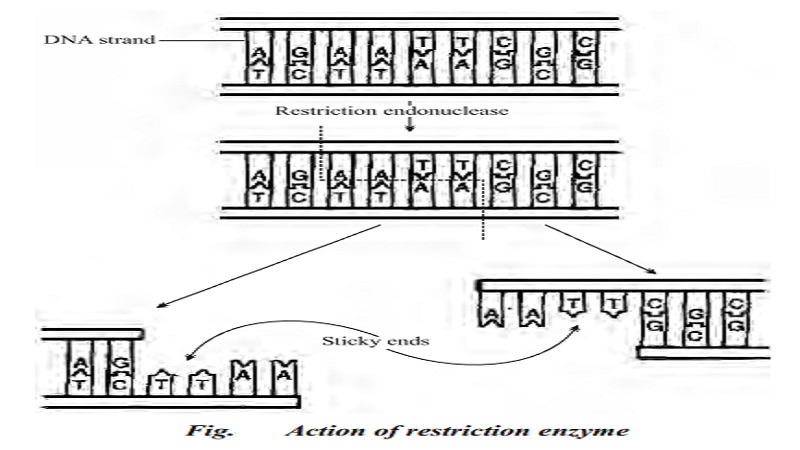Chapter: 11 th 12th std standard Bio Botany plant tree Biology Higher secondary school College Notes
How DNA is cut?

How DNA is cut?
All bacteria produce atleast one type of restriction enzymes. They are meant to help the recombinant researchers to enable them to cut the DNA but to help in the very survival of the bacterial species against the invading bacterial viruses. The restriction enzymes can chop up and render harmless invading viral DNA.Restriction enzymes cleave DNA at very specific places along its length. The restriction enzyme ECORI (E.coli Restriction Enzyme I) produced by the intestinal bacterium E. coli recognizes the following sequence.
Two DNA molecules with sticky ends (ends that are staggered or uneven) tend to join with other molecules with a complementary sequence of nucleotides in the ends. With the same enzyme, DNA fragments are cut with the matching sequence of nucleotides which complements with the sticky ends.
Action of restriction enzyme
Fragments of DNA from different organisms or even from different species may be joined together at their sticky ends, thereby producing recombinant DNA. This is made possible by the use of an enzyme called ligase. Hence, ligase is used to join the two DNA fragments.
Restriction enzyme and ligase do not care about the source of DNA. Whenever the correct sequence of nucleotides are met with by the specific restriction endonuclease, it cuts it. Similarly whenever the correct sequences of nucleotides at their sticky ends in the two strands are met with, these are ligated (joined) by the enzyme ligase.
Advantages of recombinant DNA
A sample of therapeutic drugs presently manufactured through recombinant DNA is found in the table given below.
Related Topics